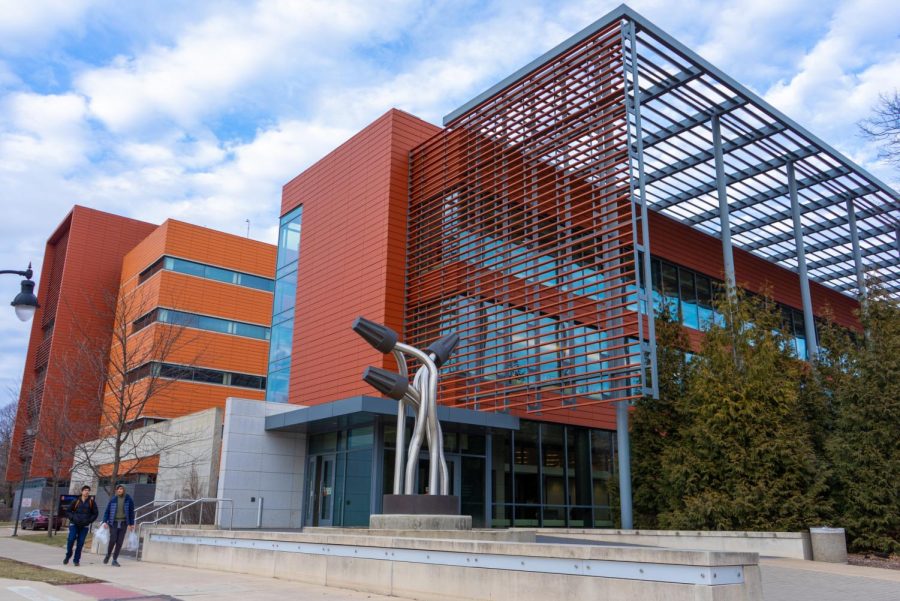ECEB reaches net-zero energy status
The Electrical and Computer Engineering Building is located on the North Quad off of Wright Street. The building is now the Uniiversity’s first net zero energy building on campus, meaning it uses no more energy than it produces via its own methods, such as the solar panels located on the roof.
February 28, 2023
The Electrical and Computer Engineering building achieved “Zero Energy Certified” status this month — meaning it is generating renewable energy on site that is equal to or more than the amount it consumes. The building is the first of its kind at the University.
“This building is consuming very little and (is) generating renewable energy from two sources,” said Ehab Kamarah, associate vice chancellor and executive director of Facilities & Services.
The two renewable sources are the solar fields south of campus, as well as solar panels on the building’s roof. But much of the building’s ability to reach “zero energy” is in its ability to conserve the energy it does use.
Instead of traditional heating and cooling, the building uses a chilled-beam system, described by Kamarah as “very sophisticated heating and ventilation systems that are very efficient” and “use a fraction of what the traditional systems are using.”
The energy conservation extends to the construction of the building itself with what Kamarah calls a “passive solar design system.”
Get The Daily Illini in your inbox!
“You optimize the orientation of the buildings, and you also maximize the glass or the glazing around the building so you capture more of the daylight, which reduces the demand on the energy,” Kamarah said about the system.
Along with position and window design, thermal mass — the ability of a building to store heat — is important to absorb heat on the building’s exterior. When the building was constructed in 2013, 70% of the exterior was covered by terracotta, which is known for its insulating properties and has been used to keep structures warm in cold en.
The newly zero energy building is one of many steps the University is taking to fulfill its ultimate commitment of reaching carbon neutrality by 2050.
“We’re building new facilities as efficient as it gets,” Kamarah said. “For example, the new business building is going to be also net zero, and the new Illini Hall is going to be LEED platinum.” LEED is a system for rating green buildings, and platinum is the highest rating.
Newer constructions like the ECE building, Business Instructional Facility and the planned Illini Hall are able to implement energy conservation into their initial design. Kamarah acknowledged there may be different obstacles when conserving energy in the University’s older buildings.
“We are conserving as much energy as possible to do something we would call retro commissioning,” Kamarah said.
The strategy consists of trying to optimize heating and cooling in existing buildings as much as possible, which Kamarah said is “a bit more difficult,” compared to working with newer buildings.
Despite the challenge, Kamarah said “(the) 2050 commitment to reach carbon neutrality … the University is taking it very seriously.”
According to Kamarah, there are more upcoming energy projects that aim to fulfill this commitment such as a new solar field and an increase in the University’s capacity for renewable energy.
“We have to walk the walk,” Kamarah said. “We want to give the model to our students that, you know, your institutions care about the environment, and that you are living in an environment where it’s green, where it’s sustainable. So that’s part of the goal for sure.”







